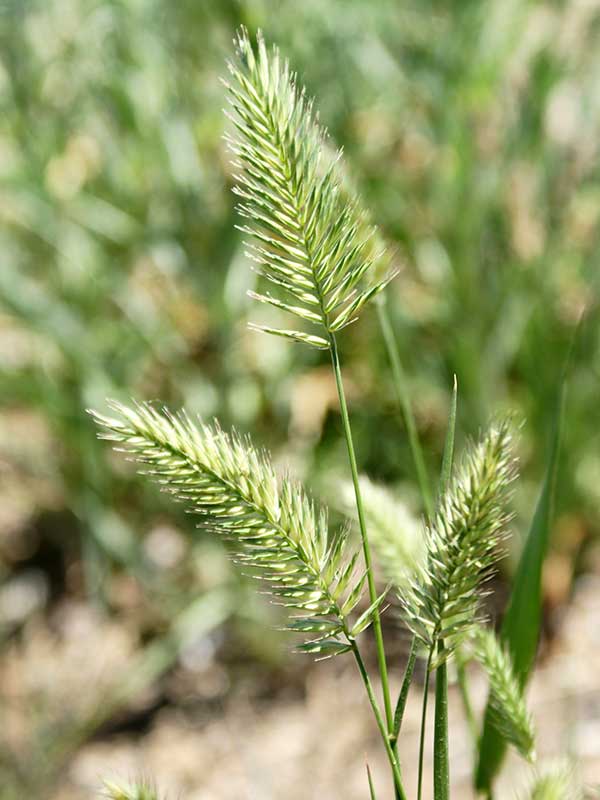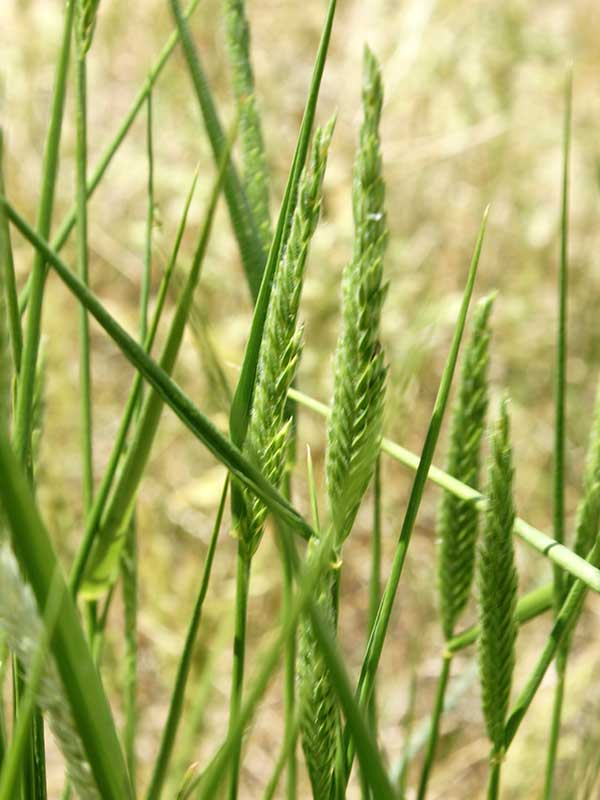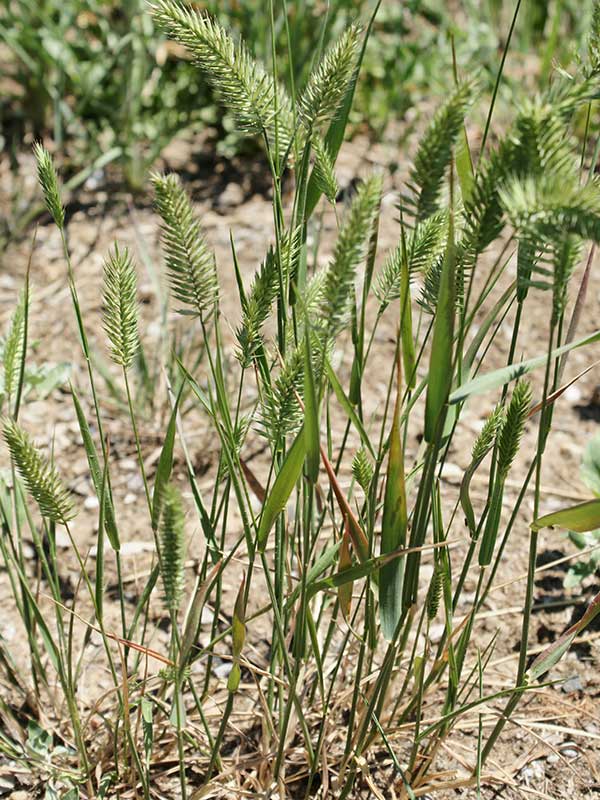Agropyron cristatum / crested wheatgrass
- cool season grass growing in dense tufts
- easily recognized by planar spike
- spikelets overlap and are angled with respect to the stem
- common
Note: grasses have a nomenclature all their own, much different from that of dicots. A good resource/slide show from the University of Idaho on grass structures is available here.
Crested wheatgrass is a perennial bunch grass that grows in dense tufts. It was introduced from Asia and is common throughout the west, particularly because it is commonly planted. Among its good attributes for living in the Valley are its high drought and cold tolerance. It can withstand short periods of flooding but not generally wet soils.
This species is easily recognized when flowering or in seed, which is most of the time. It is, in my opinion, also rather pretty because of the arrangement of its florets on the stem. The spikes are up to 3 inches long and the spikelets are arranged in a comb-like way, tapering toward the tip of the spike. The spikelets are also in a single plane, crowded up against each other and slightly angled with respect to the stem… although they spread out somewhat at the ripe seed stage. The culm itself is erect and up to 3 feet tall.
Crested wheatgrass is frequently planted for forage, and is especially good for that in the spring when its protein content is high. On the other hand, it has a pronounced ability to outcompete native species because of its deep root system. It can also, however, be mowed short for a low maintenance, drought resistant lawn. One source notes that because it is a bunch grass, it tends to have somewhat uneven height, so doesn’t make a good croquet surface. Be warned!
Crested wheatgrass is a long-lived, “cool season” grass with an extensive and deep root system but it doesn’t spread by rhizomes, so it stays pretty much in one place. It spreads primarily by seed which germinates early in the season. As a result it can outcompete cheatgrass which is a problematic invasive species in fire prone systems, i.e. throughout the west.
| Family | |
|---|---|
| Inflorescence size | |
| Inflorescence type | |
| When? | |
| Where? |



